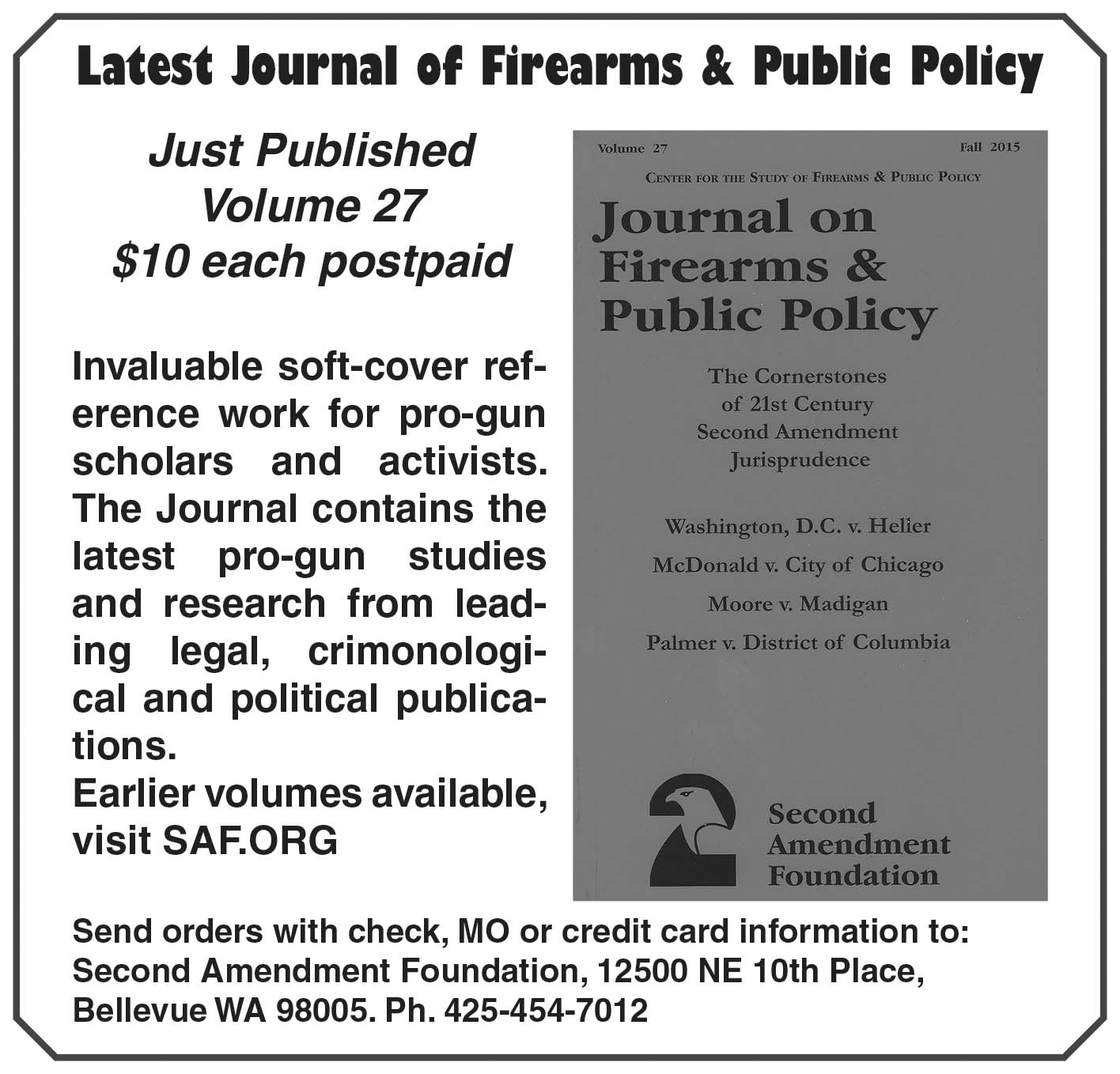Review by Larry S. Sterett | Contributing Editor
 101 CLASSIC FIRARMS by John Markshall. ©2014. Published by Dillon Precision Products, Inc., Dept. TGM, 8009 E. Dillon’s Way, Scottsdale, AZ 85260-1809. Price: $29.95, plus postage, or $34.95 autographed, plus postage. Also available at online bookstores.
101 CLASSIC FIRARMS by John Markshall. ©2014. Published by Dillon Precision Products, Inc., Dept. TGM, 8009 E. Dillon’s Way, Scottsdale, AZ 85260-1809. Price: $29.95, plus postage, or $34.95 autographed, plus postage. Also available at online bookstores.
This 224-page hardbound volume provides a chronological foray into what has been called the Golden Years of Firearms Development. From ‘First Gun’ to ‘Help! Send Guns!’ This tome features what the author considers Classic Firearms listed in the order of their development. Even if the reader’s favorite small arm is not included, it would be difficult to refute those small arms featured.
There are no chapters in this book, nor a bibliography or index. There is a brief Introduction, plus an appendix listing the firearms covered in alphabetical order by category—handguns and long guns—in addition to five biographical sidebars and three short bonus features. (The sidebars feature four of our greatest firearms inventors, and Sgt. Alvin York of World War I fame.)
Each firearm featured is allotted two pages, including text and one or two superb full-color photographs. Handguns are illustrated full size, or slightly reduced, although some pistols, such as the S&W Model 1913 .35 Auto, appear larger, while long arms have a full length photo and often a close-up of the receiver or a prominent feature. The photographic quality is excellent, and even the metal markings and stock checkering is readily prominent.
Readers may be well aware of the names of John M. Browning, William B. Ruger Sr., and John T. Thompson as being those of prominent firearms inventors. Not as well known, but once referred to by John Browning as “the greatest living arms designer and probably the greatest of all time” was John D. Pedersen. Pedersen was the man behind the ill-fated Pedersen device of World War I, and the .276 Pedersen cartridge which almost replaced the .30-06, until nixed by then Army Chief of Staff Douglas MacArthur. There was a lot more to the man, who had over 70 firearms patents granted in his lifetime. Among the better known Pedersen arms are the Remington Model 51 pistol and the Model 10 shotgun, although his refined version of Browning’s initial work became the 20-gauge Model 17 pump gun, which eventually lead to the Ithaca Model 37 and 87, and the Browning BPS line.
One might believe that a book on “classic” firearms would cover only the best and most popular firearms produced. Not so! The author has included the Japanese Type 94 Nambu Pistol as an example of probably the worst handgun design to ever achieve production. Intended as a replacement for the larger Type 14 Nambu pistol, it was not as reliable or more economical to produce. The only plus, if it can be called that, is as an example of the ugliest and most unreliable pistol ever manufactured.
This is an excellent volume and one which deserves to be on every firearm fancier’s reference shelf. It is not highly technical—few specifications are provided—but some historical background is provided for each of the 101 firearms featured. Are there firearms not covered, which possibly should have been? Tough call! The Winchester Model 12 pump action, Winchester Model 50 autoloading, and the J.C. Higgins Model 60 autoloading shotguns are not mentioned, and there are no doubt other rifles and handguns equally deserving, but then it wouldn’t be 101 Classic Firearms. It’s a GREAT book as is.




